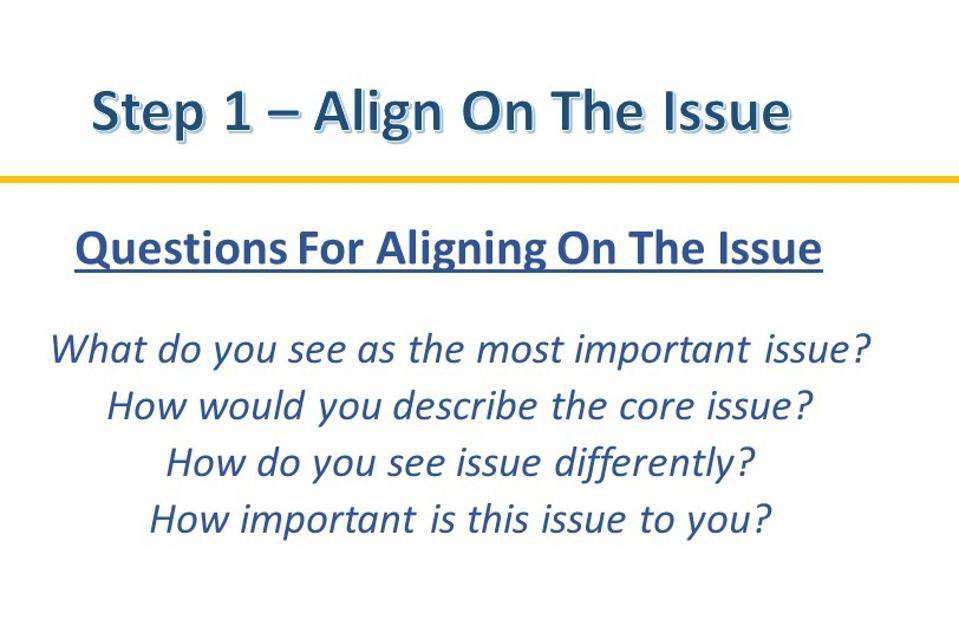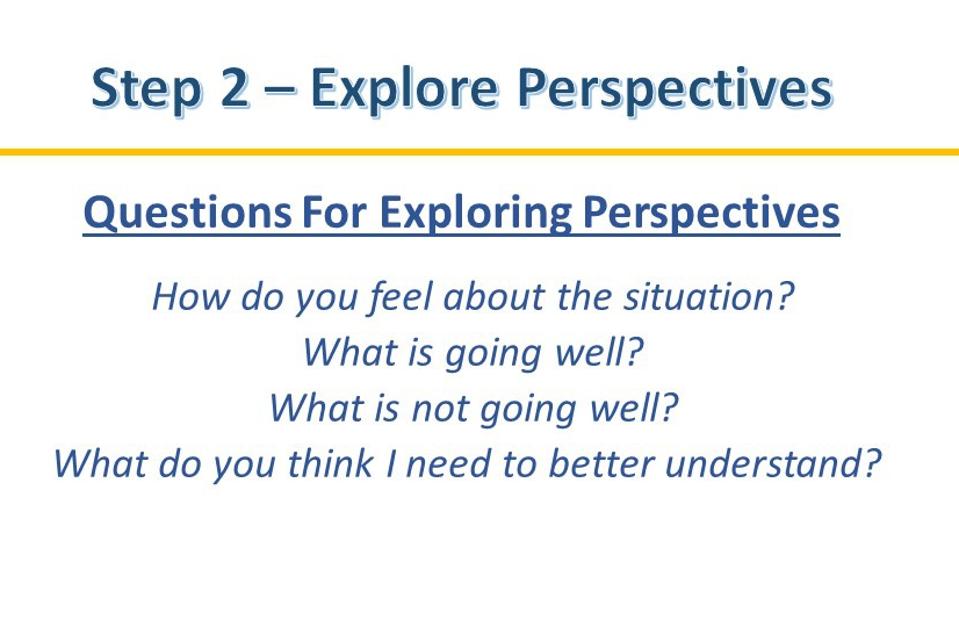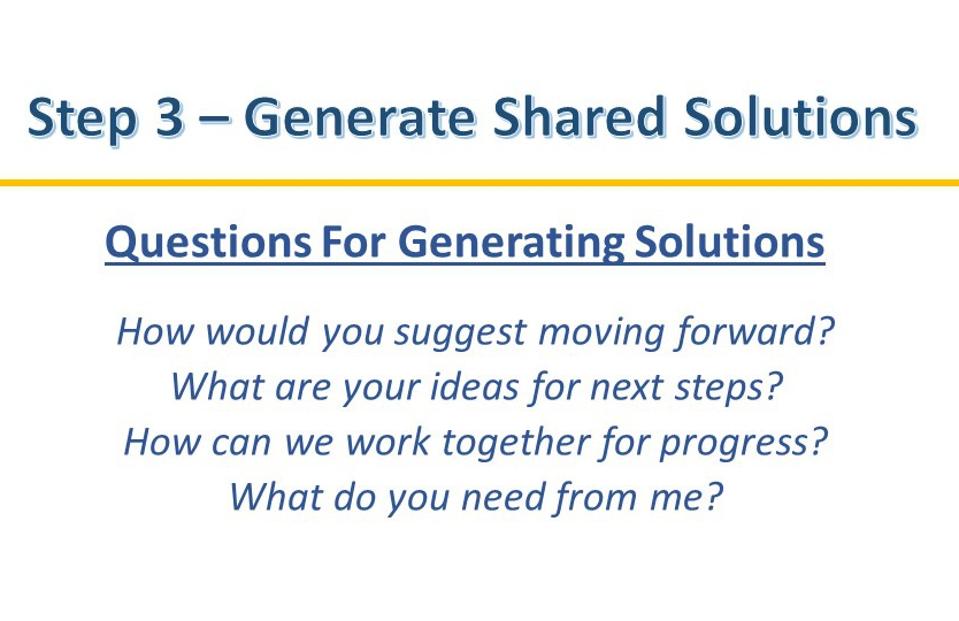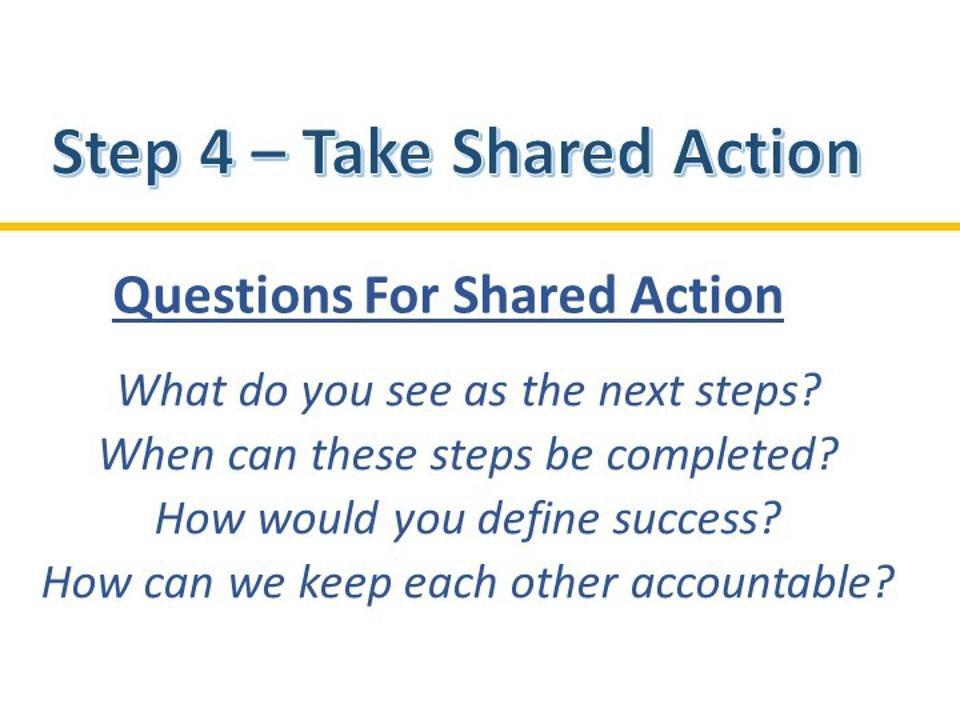An ever-growing mountain of research, books, and articles highlights the importance of emotional intelligence, empathy, mindfulness, and learning agility for leadership success. The primary way a leader exhibits these abilities is by how they communicate with others.
Most leaders have learned how to effectively engage in simple conversations like assigning tasks, checking on a status update, or giving directions. Simple and transactional conversations are easy. It is the ability to engage others in productive high-stakes conversations that will eventually define a leader’s success or failure. When leaders successfully engage in high-stakes conversations, people walk away feeling that the time was well-spent and with a deeper understanding of other perspectives.
The primary tools for leaders to create an environment for shared dialogue during high-stakes conversations are asking quality questions, listening to others, and considering different perspectives when forming solutions. Building this foundation develops trust and sets the stage for the possibility of creating new insights and shared action for progress.
4 Steps For Successful High-Stakes Conversations
1) Align On The Issue
Defining and establishing agreement on the issue at hand is critical to the success of a high-stakes conversation. An issue is either a problem, obstacle, barrier, or opportunity that the leader must address. A leader should never assume that other people see the situation or the core issue as they do. Taking the time upfront to define the core issue focuses all stakeholders on a common challenge and begins the conversation with an agreement.
Leaders can become impatient when encountering challenges and want to move directly into resolving the issue. This approach might work well in resolving routine and recurring challenges, but it does not work when a leader needs to engage others to advance complex and relational issues. Skilled leaders invest time up-front to define and align on the core issue by asking the following questions.

2) Explore Perspectives
You have probably heard of the old Indian parable about the blind men and the elephant. There are different versions of this story, but in general, this is a story of a group of blind men who touch an elephant to learn what it is like. Each blind man feels a different part of the elephant, but only one part, like the trunk, side, or tusk. They then compare perspectives and learn that they do not agree with each other about the description of the elephant.
Each of the men is partly correct since they did assess one major part of the elephant's body. However, they are all wrong because in their blindness and limited perspectives they all failed to comprehend the creature in its entirety. Each description is missing details that can only be gained by understanding the other men’s perspectives.
This parable highlights a common pitfall that leaders encounter when addressing complex issues without taking the time to understand other relevant perspectives. Individuals may not agree or even understand others’ perceptions but awareness of these differing perspectives enables all parties to have a more accurate view of the issue. The best leaders value that people bring different experiences, values, goals, and perceptions, which leads to a more holistic understanding of the issue.
The image below shares questions that leaders can ask to help understand others’ perspectives.

3) Generate Shared Solutions
Making the shift from wanting to be the one who has the all the answers can be difficult because almost all leaders rise to leadership positions because of their ability to problem-solve and get things done. Because being quick to have the answers has served them well in the past, the natural inclination for leaders when feeling a loss of control, frustration, or threat is to take the lead in resolving the issue at hand.
The best leaders understand their role is to build strong relationships, influence others, coach, delegate, engage employees, and develop talent. None of these critical components for leadership success is dependent on their ability to have all the answers. Leaders who are best at having high-stakes conversations have learned to stop the habit of quickly sharing their solutions and instead have learned to take the time to ask others about their ideas for moving forward.
The transition to generating solutions is the most satisfying part of the conversation because the leader is now partnering with others to develop viable solutions. This is the part of the conversation where the work from the first two steps pays off with new insights and buy-in for action. The image below shares questions leaders can use to generate shared solutions.

4) Take Shared Action
There is nothing more frustrating than having a great conversation about an issue or opportunity, and then no action takes place. Most of the time, the lack of follow-through is because the leader has not taken the time to establish clear and explicit shared agreements about next steps.
The end goal of successful high-stakes conversations is to create and implement solutions that advance the situation at hand. Once there is agreement on solutions, it is time to establish clarity and accountability for the next steps. The image below shares questions to help leaders create clarity about future action.

A leader will never reach their full potential professionally or personally until they develop their ability to have effective high-stakes conversations. Given this fact, organizations need to hire, train, reward, and promote leaders capable of successfully engaging in high-stakes conversations because they are essential for individual and collective success.







